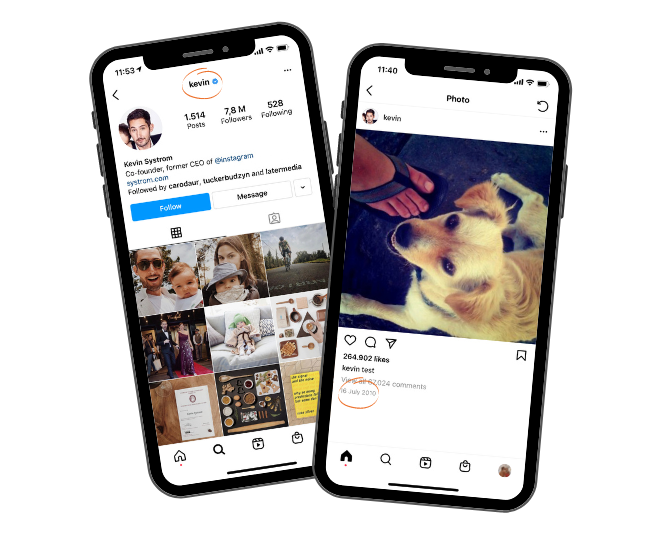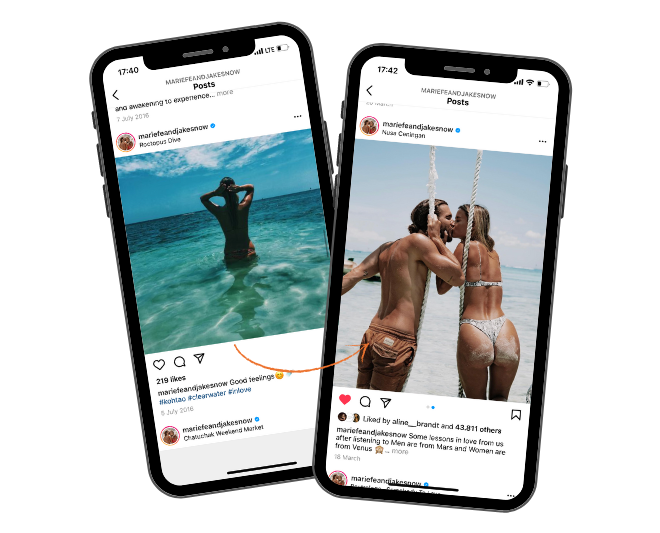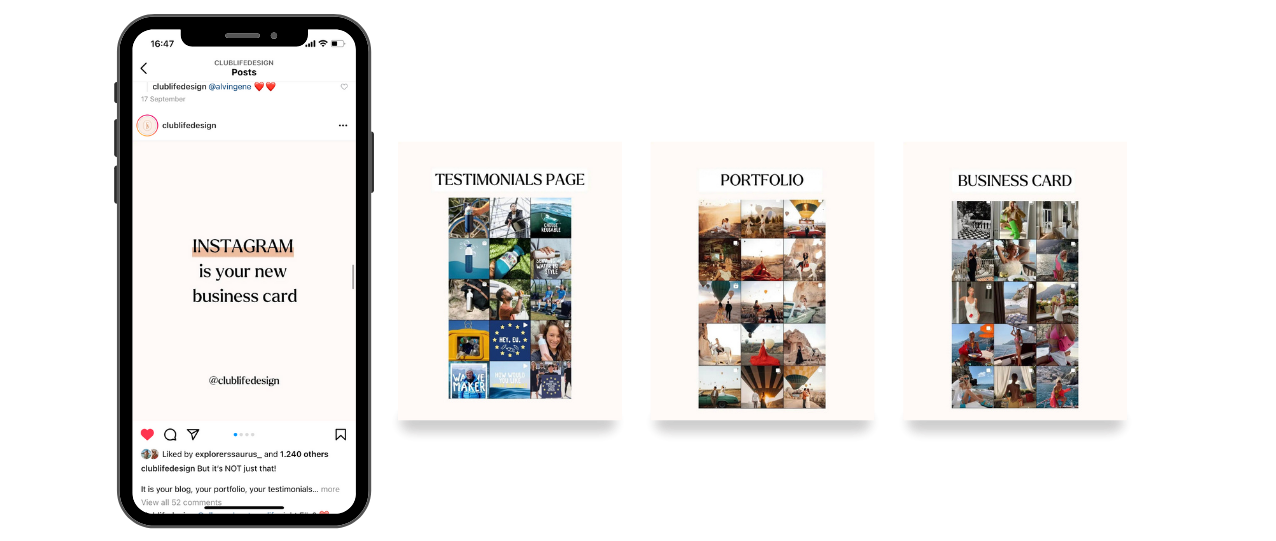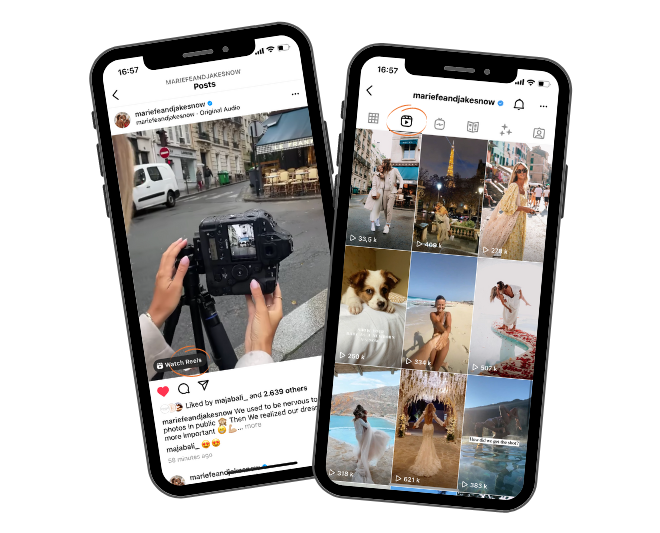
The evolution of Instagram:
From a simple camera app to one of the most important social networks
Oct 06, 2021
Instagram has been one of the fastest-growing and developing apps since its launch in 2010 and October 6th marked its 11th birthday! The core purpose of the app itself hasn’t changed much (sharing impressions and memories with others) but there have definitely been some very impactful developments over the years. From adding hashtags to the introduction of Reels; there have been major milestones and updates along the way.
It’s no secret that Instagram plays a huge role in our lives. It’s allowed us to build a community of over 1 million people, live the lives we always dreamed of, and now even teach students the tips and secrets we learnt about the platform over the years. Many other creators and businesses have been positively impacted by the app and were able to completely turn around their lives. But what is the story behind this social media network?

In this blog post I'm taking you through the evolution of this tiny, but mighty app. We want you to see just how the app has changed over the years, and how it’s become one of the most powerful social media networks.
So let’s get over the evolution of Instagram!
2010 - The first picture was a..
October 6th 2010 marks the day Instagram had officially launched as a mobile photo-sharing social media platform. What’s crazy is that more than 25.000 users signed up on the day it was launched! At that point, you were able to share square-shaped pictures onto your profile. Before posting, you could edit with a selection of filters, such as Earlybird, X-Pro II, 1977, Gotham and more. That was the key difference from other media sharing apps.
Did you know what the first picture uploaded onto Instagram was? It was Kevin Systrom’s (Co-founder of Instagram) golden retriever sitting at a taco stand with the caption “Test” - I’m sure he would have never imagined that in just over 10 years there would be over 318m posts with the #dog tag!

2011 - Hello Hashtags
New year, new features! In January, Instagram added hashtags to help users discover other people, and in particular, pictures of different categories. That way you could make your content stand out more, and attract like-minded users with it. Fun fact: #love is the most used hashtag of all time, with 2.1B posts!
The introduction of hashtags was not the only milestone in 2011. Instagram also introduced their classic app logo - a knock-off Polaroid camera with a rainbow stripe. By September, there were already 10 million people on Instagram, and it was only 13 employees strong!
2012 - Instagram joins Facebook
In April that year, Facebook’s CEO Mark Zuckerberg decided to buy Instagram for what seemed like an insane price of 1 billion dollars! At the time, Instagram had just 30 million users and didn’t even have a revenue stream. But with the purchase of Instagram, new changes were put in place - such as the Explore page! It introduced a new way for users to find new accounts, or interesting content to engage with based on their interests. Getting your content onto this page can be incredibly helpful if you want to grow your follower count, get more engagement on the post and increase your chance to go viral. It can be quite hard to get on there, but it is much easier if you do the right things!
2013 - Instagram is no longer a photo-only platform
After the app reached 100 million monthly users in February 2013, they also added some major features to the platform! In May, Instagram introduced photo tagging and the ‘Photos of You’ section on user’s profiles, collating every tagged image of you in one spot. However, an even bigger update came just one month later - do you remember when you could only upload images to the platform? Well, that all changed when Instagram rolled out the option to upload videos for up to 15 seconds. This allowed users to share even more creative content with their audiences! If these changes weren’t enough already, they also added the DM feature to send photos, videos and texts directly to others.
2014 - Going beyond the square
In 2014, Instagram was close to hitting the 300 million monthly user mark. They added more filters to their repertoire and released new editing tools to adjust characteristics such as brightness, contrast, highlights, and shadows. In August that year, they also changed the photo format from square to support vertical and horizontal uploads (between 1.91:1 and 4:5) - so no more need to cut off any body parts or pretty landscapes.

2015 - Let’s talk business
To support businesses and online entrepreneurs, Instagram introduced small screen ads, allowing advertisers to share 30 second infeed videos – twice the 15 second limit given to users. In the same year, one more small, but entertaining feature was added: Boomerangs! Another cool and creative way to capture and share moments.
2016 - RIP chronological feed
2016 was a big year for our beloved app! Not only did we (@mariefeandjakesnow) join the ‘gram 😉 but they also enabled 1 minute video shares in March, opening new doors for creators. Then, only 2 months later, the app went through an overhaul, including a new logo icon and an updated user interface.
On an unsuspecting day in June, it was time for an update that many still see as a nightmare to this day: the introduction of an algorithmically-driven feed - bye bye chronological feed (where the latest published content displayed first). Instagram’s move away from the chronological method, based the user’s feed on their interests and interactions. Yes, I know that the algorithm can be tricky but we promise that it’s not working against you!
2 months later, Instagram also launched their own version of “Snapchat” - Stories. This game-changing feature lets you upload photos or videos which disappear after 24-hours. By sharing our days and interacting with our audience, we have built a deeper connection to our followers. It’s no wonder stories are now one of the app’s most popular features, with over 500 million daily users!
To end the year on a high note, Instagram also added 2 more major features to the list. The first was shoppable tags, allowing brands to tag their products in feed posts. This was an absolute game changer for all small businesses, as users simply clicked on the tag, and they were able to view the item and pricing of the product. Secondly, Instagram Live was launched; allowing users to hold live broadcasts for up to one hour to strengthen the connection with their followers even more.
2017 - The possibilities expand further
Do we have any indecisive people here? Well, now you don’t need to spend all day choosing between 2 pictures anymore because thanks to an update in 2017; carousel posts were born. This made it possible to share up to ten pieces of content in one post - including photos and videos. We absolutely love this feature and use it for most of our posts! Stories also got an upgrade in March with the addition of location tags and hashtags. Then, 2 months later, they expanded the functions further with more filters and stickers to choose from.

2018 - The release of IGTV
In 2018 Instagram doubled down on video with the launch of IGTVs, a new video feature that allows you to upload long-form video content of up to 10 minutes. Brands and creators with larger audiences are even able to upload hour-long IGTVs.
Additionally, you are now able to add music to your stories which makes everything sound way cooler, and can really set the mood for your impressions. This culminated with Instagram hitting the 1 billion monthly active users mark!
2019 - Checkout on Instagram
With the rise of businesses using the social platform to promote their business, Instagram takes it to the next level and releases the checkout function. Instead of the ‘View on Website’ button when clicking on a shoppable tag, you can simply click on ‘Checkout on Instagram’ and users are able to make quick and easy in-app purchases.
2020 - Instagram’s response to TikTok
Even though 202 was a hard year for most of us, that didn’t stop Instagram from innovating. They celebrated their 10 year anniversary and released a tool that changed the game for many creators - Reels. But before we get into it more, let’s look at other features that were added that year.
First of all, we can now finally access DMs from Instagram’s website, which is super useful for both businesses and creators. Additionally Instagram “Live Badges” were introduced in a few countries which allows live viewers to purchase badges in order to support the creator. And lastly, Instagram now gives all users the option to pin up to three comments on posts! We love this tool as it can highlight some of our favorite comments under our post, a special message or just a friendly reminder that we don’t want to get lost in all the other comments.
Now, onto the feature we have learned to love over this past year and has allowed us to grow the most: Reels! In August 2020, in the midst of the pandemic, Instagram rolled out Reels, a short-form video feature that allows you to create and discover short entertaining videos. It’s a fun, new way to create, share, and watch entertaining content from your favorite creators and it can have a huge impact on your account! If you want to learn how to make your Reels go viral then you can find the answer here!

This sums up our deep dive into the history of Instagram. As the saying goes, you must evolve to stay relevant – and the platform has done exactly that.
The reason we wanted to share this with you is because we wanted you to see how far you can go if you just stick with it. Instead of trying to do too many things, Instagram focused on doing just one thing really well - and I think we can all agree that they’ve succeeded!
Cheers,











